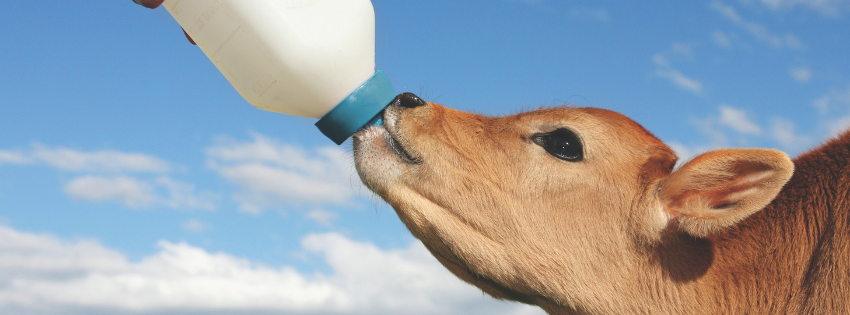Another calf rearing season is fast approaching so it’s important we start to consider what we want to achieve. It’s vital that we get our pre-weaning nutrition right to get the best possible results.
MaxCare Business Manager, Tom Newton said “better nutrition for your calves will deliver a better return on your investment. An investment in the health and nutrition of your calves is an investment in the future profitability of your herd.”
Something to consider is what impact does the pre-weaning period have on ‘whole of life’ production? Recently data (from Gelsinger et al., 2016) was presented showing a 130kg increase in 305 day milk yield with each 100g per day increase of Average Daily Gain (ADG) in the pre-weaning period. With this theory in mind, if we can increase our ADG in the pre-weaning period from 500g per day to 800g per day this would mean an extra 390kg of milk (~32kg Milk Solids/cow).
“Increasing average daily gain can be achieved by feeding a high-quality Calf Milk Replacer (CMR) with higher nutrient densities which are above ‘traditional’ rates” said Mr Newton.
Figure 1 below shows a ‘Traditional View’ of feeding 1% of body weight with a lower nutrient density CMR (20:20 Protein:Fat) compared with a ‘Modern View’ of feeding 1.5% of body weight with a CMR containing 28% Protein and 22% Fat (e.g. MaxCare ULTIMATE CMR).
FIGURE 1: Impact of Feeding Rates, CMR Nutrient Density and Ambient Temperature on Average Daily Gain.

Figure 1 also demonstrates that temperature can in fact have an impact on ADG. A 40kg calf fed 10% of its body weight (i.e. 4L per day) at 20°C will at best gain 400g per day. The same calf at 0°C will potentially lose weight. For every 5°C we drop below 20°C we require an extra 1.1 Megajoules (MJ) of Metabolisable Energy (Me) to achieve the same result. This is the equivalent of an extra 50 grams/calf/day of CMR for every 5°C below 20°C. Have you considered how you need to adapt the feeding regime for your calves when the temperature heads south?
It’s important to understand our desired Mature Cow Body Weight (MBW) to determine the growth rate we need in our calves. 50% of our skeletal growth comes in the first 6 months and we need to achieve 85% of our MBW after first calving.
To achieve this, we need to have the following targets:
– Weaning Weight: 17% of MBW
– Puberty (~7 months): 35% of MBW
– Joining (~13 months): 55% of MBW
– Pre-Calving (~24 months): 94% of MBW
Furthermore, to make our businesses as efficient as possible we need to ensure we are getting the highest productivity out of our feed. So, when exactly do we get the best feed conversion out of our animals? Here’s the feed conversion ratio (i.e. feed:growth) at the different stages of life for a pre-calving heifer:
– Birth to Weaning = 2:1
– Weaning to Puberty = 6:1
– Puberty to Joining = 13:1
– Joining to Late Pregnancy = 15:1
The MaxCare range of calf milk replacers are formulated to give the best possible results for farmers, building a strong foundation for healthy growth and animal nutrition. Tom Newton explains, “our priority is to ensure that young animals (the future of our enterprises) are at their full potential when they get to weaning. This sets them up for improved productivity throughout their life. We produce products that deliver the best possible results for the animal whilst still being functional and easy to use for the farmer.”
Recommended reading:
MaxCare explores 5 comments about feeding your calves cow’s milk instead of calf milk replacer.




